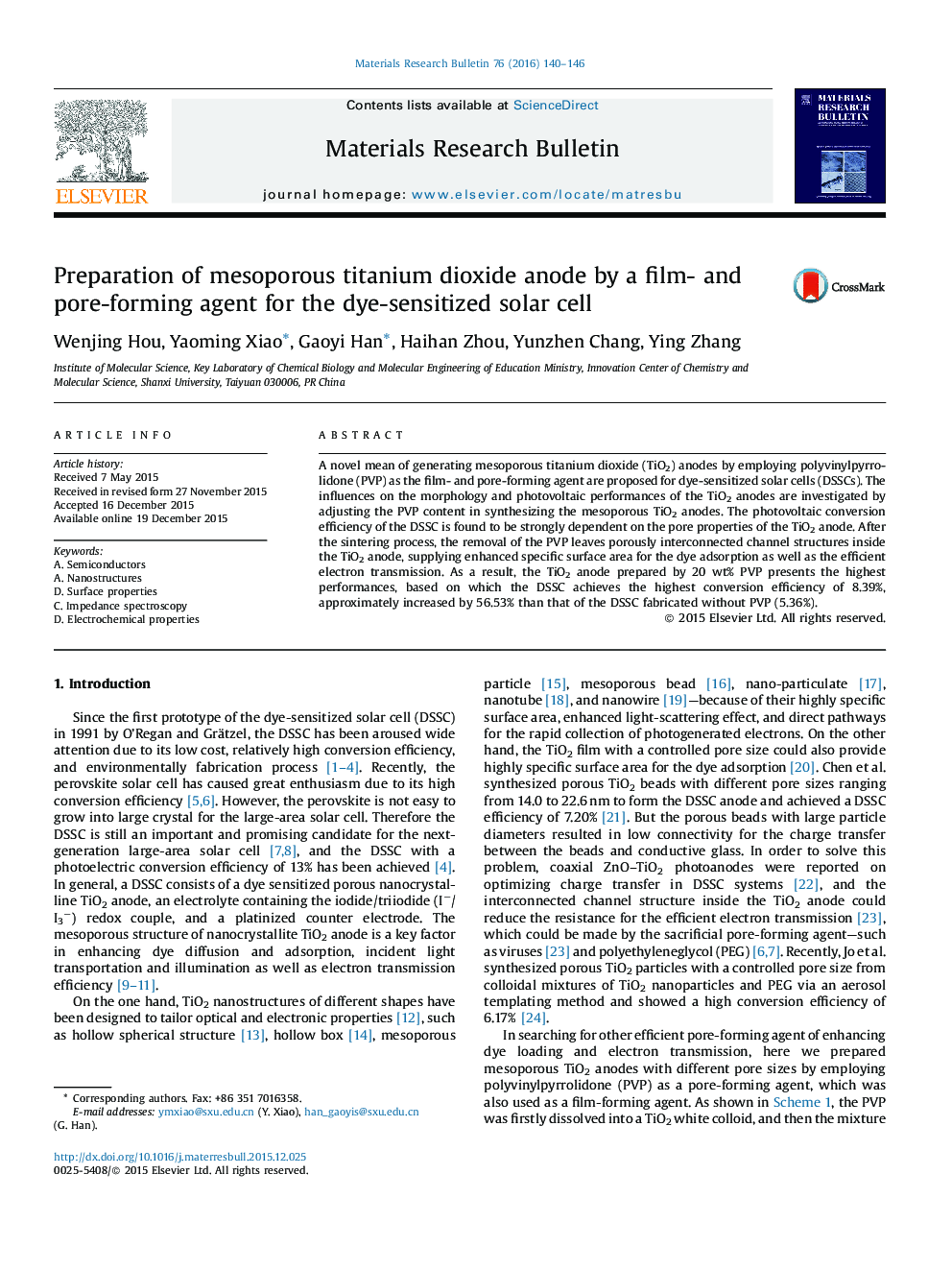| Article ID | Journal | Published Year | Pages | File Type |
|---|---|---|---|---|
| 1487372 | Materials Research Bulletin | 2016 | 7 Pages |
•PVP is used as a film- and pore-forming agent to prepare the mesoporous TiO2 anode.•The TiO2 anode supplies high surface area for the dye adsorption.•The DSSC efficiency is strongly dependent on the pore properties of the TiO2 anode.•The DSSC efficiency with the TiO2 anode prepared by 20 wt% PVP reaches 8.39%.
A novel mean of generating mesoporous titanium dioxide (TiO2) anodes by employing polyvinylpyrrolidone (PVP) as the film- and pore-forming agent are proposed for dye-sensitized solar cells (DSSCs). The influences on the morphology and photovoltaic performances of the TiO2 anodes are investigated by adjusting the PVP content in synthesizing the mesoporous TiO2 anodes. The photovoltaic conversion efficiency of the DSSC is found to be strongly dependent on the pore properties of the TiO2 anode. After the sintering process, the removal of the PVP leaves porously interconnected channel structures inside the TiO2 anode, supplying enhanced specific surface area for the dye adsorption as well as the efficient electron transmission. As a result, the TiO2 anode prepared by 20 wt% PVP presents the highest performances, based on which the DSSC achieves the highest conversion efficiency of 8.39%, approximately increased by 56.53% than that of the DSSC fabricated without PVP (5.36%).
Graphical abstractFigure optionsDownload full-size imageDownload as PowerPoint slideA novel mean of generating mesoporous titanium dioxide (TiO2) anodes by employing polyvinylpyrrolidone (PVP) as the film- and pore-forming agent are proposed for dye-sensitized solar cells.
